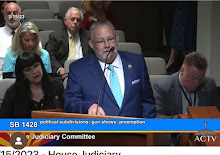Grassroots advocacy is often the unsung hero of political change, operating at the local and state levels with a power that might surprise you. When everyday people band together to support a cause, their collective voice can influence policy decisions and shape communities in meaningful ways. So, how exactly can these movements transform policy landscapes? Let’s dive into some strategies and real-world examples to understand the impact of grassroots lobbying.
The Power of the People
Grassroots movements thrive on the principle that ordinary
citizens, when united, can wield significant influence over policymakers. By
organizing community members, educating the public, and engaging in persistent
lobbying, these movements can push for legislative changes that reflect the
people's will.
Strategies for Effective Grassroots Lobbying
- Community
Engagement: Building a solid base of support is crucial. This involves
holding town hall meetings, community forums, and using social media to
rally support and keep the public informed. A well-informed and engaged
community is the backbone of any grassroots movement.
- Petitions
and Signature Drives: Collecting signatures is a traditional yet
effective way to demonstrate public support for a cause. Petitions can be
presented to local or state officials to show that there is a substantial
constituency backing a particular issue. These can be done electronically
also, effectively increasing the reach the grassroots advocates have.
- Coalition
Building: Partnering with other organizations that share similar goals
can amplify a movement's voice. Coalitions can draw from a broader pool of
resources and expertise, making advocacy efforts more robust and
far-reaching.
- Lobby
Days and Public Demonstrations: Organizing events where supporters can
meet directly with legislators or participate in public demonstrations can
put a human face on the issues. These face-to-face interactions are often
more impactful than emails or phone calls.
- Media
Campaigns: Utilizing both traditional media (newspapers, TV, radio)
and new media (social media, blogs) helps in spreading the message to a
wider audience. Effective media campaigns can shape public opinion and put
pressure on policymakers.
Real-World Examples
- Mothers
Against Drunk Driving (MADD): Founded in 1980 by a mother whose
daughter was killed by a drunk driver, MADD is a classic example of
grassroots advocacy. Through relentless campaigning, public education, and
lobbying, MADD has been instrumental in passing stricter drunk driving
laws nationwide, raising the legal drinking age to 21, and lowering the
legal blood alcohol content level in many states[1].
- Occupy
Wall Street: This movement began in 2011 as a protest against economic
inequality and corporate influence in politics. While it did not result in
immediate legislative change, it significantly altered the national
conversation around income inequality and inspired other movements
globally[2].
- Fight
for $15: This labor movement advocating for a $15 minimum wage started
in 2012 with fast-food workers in New York City. Through organized
strikes, public demonstrations, and lobbying, the movement has achieved
significant victories, with several cities and states raising their
minimum wages.[3]
Grassroots advocacy is a testament to the power of
collective action. By engaging communities, building coalitions, and
maintaining persistent and strategic lobbying efforts, grassroots movements can
drive significant policy changes at local and state levels. Whether it’s
through organizing events, running media campaigns, or directly lobbying
legislators, these movements prove that when people come together for a common
cause, their voices can indeed make a difference.
Through the power of grassroots advocacy, everyday people
can transform the political landscape, one policy at a time.
Be the change you want to see in the world.
[1] MADD.
(n.d.). History of MADD. Retrieved from https://www.madd.org/about-us/history/
[2] Gitlin,
T. (2012). Occupy Nation: The Roots, the Spirit, and the Promise of Occupy Wall
Street. HarperCollins.
[3] Fight
for $15. (2023). About the Movement. Retrieved from https://fightfor15.org/about/

